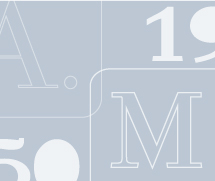NEWS
Clearing the mess is not guaranteed…
11.07.2014
Chaos Theory is a branch of mathematics, with various applications in other branches of science, that studies the behavior of non-linear, dynamical systems, which are sensitive to initial conditions. Otherwise, you may know the Theory as "The Butterfly Effect".

The characteristic of these systems is that when their initial conditions are varied, they end up producing different results, thus making long-term prediction of their behavior impossible. This happens even though the systems are causal, i.e. their behavior is fully determined by the initial conditions, without the involvement of random parameters. Edward Lorenz has summed up the chaos in the following sentence:
Chaos: When the present determines the future, but the approximation of the present does not approximate the future.
Typical examples of such systems are economic systems, weather, changing populations or air traffic control.
A Japanese company, the Electronic Navigation Research Institute ( ENRI ), which is engaged in research into air traffic management systems, including air traffic management, communications, and navigation and surveillance technologies, claimed to have invented a "chaotic computing system theoretical exponential value”. For this reason, in 2005 he even applied for a patent in India as well as in other countries.
As you probably know, patent applications based on solving mathematical equations (or mathematics in general), even if they have technical results, are not accepted and are rejected. On this basis the responsible Authority for the issuance of patents in India, decided that the issuance of a patent was not allowed.
ENRI appealed to a second instance court, arguing that its application related to a system for analyzing signals in time series with a method based on Chaos Theory and thus calculating the corresponding chaotic theoretical exponential value.
As expected, the appeal was rejected, as the court ruled that the invention was nothing more than "a mathematical method for solving mathematical equations that are further based on various algorithms."
The conclusion, although obvious, is that even if you solve the Chaos Theory, it is not certain that you will get the corresponding patent.


